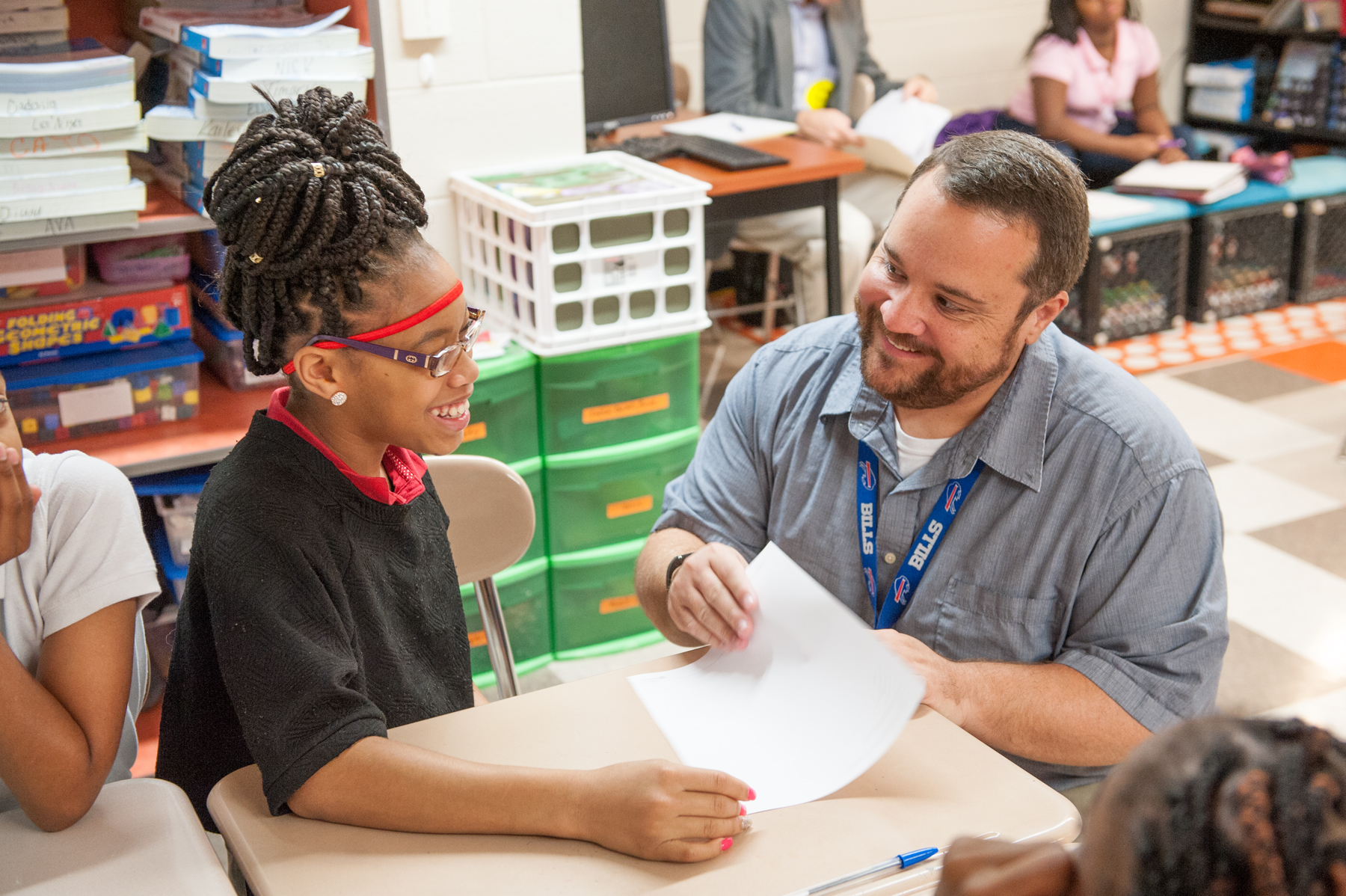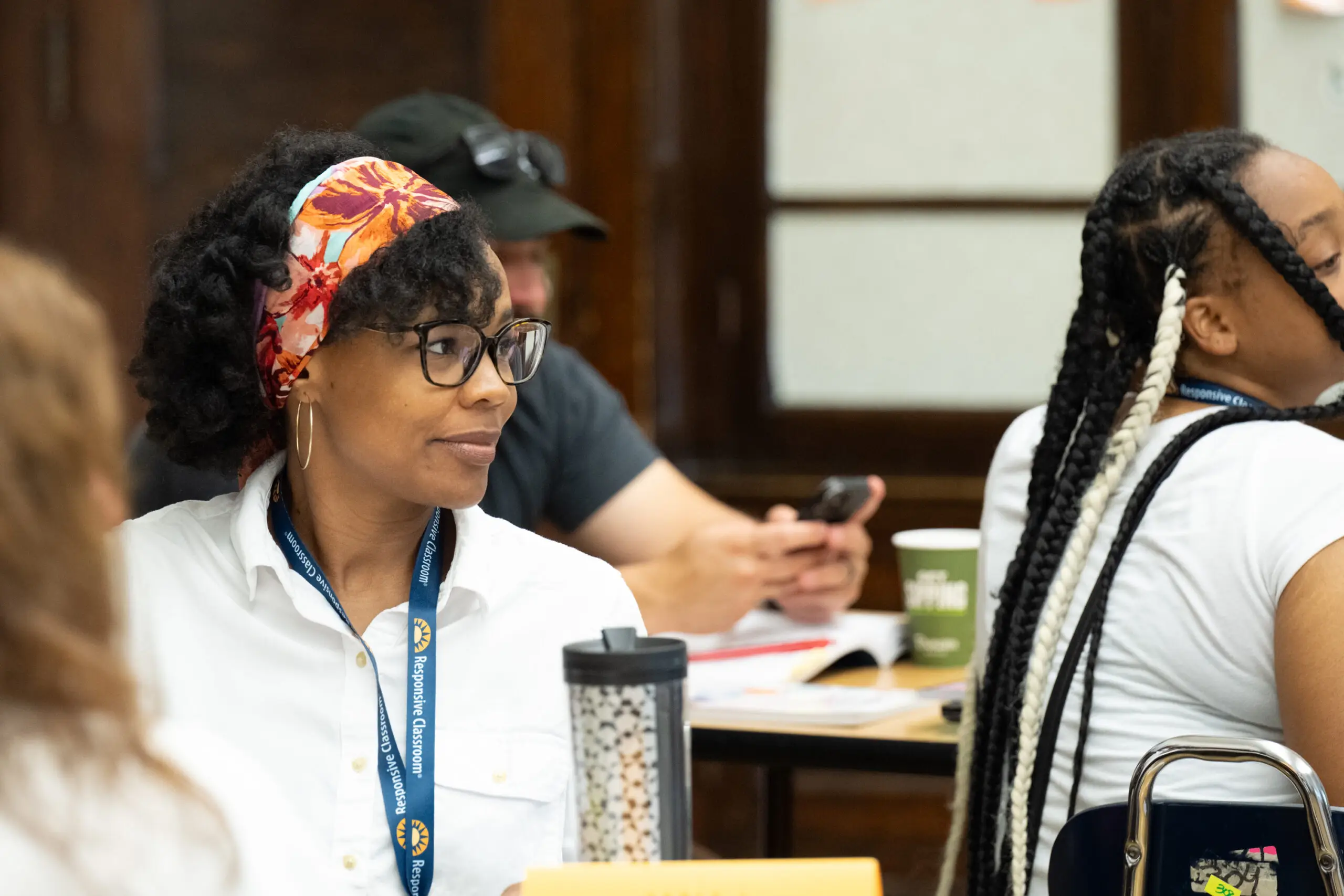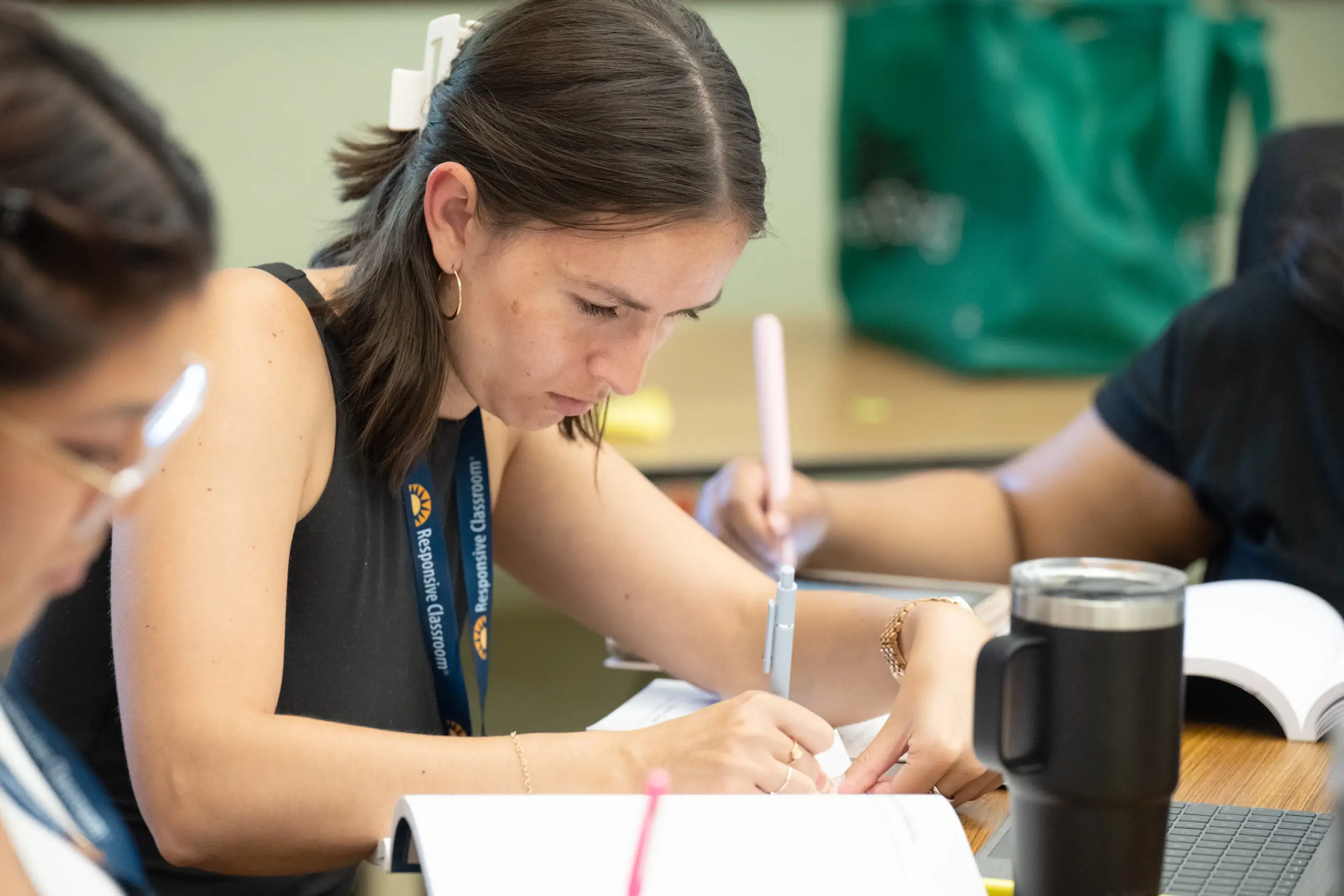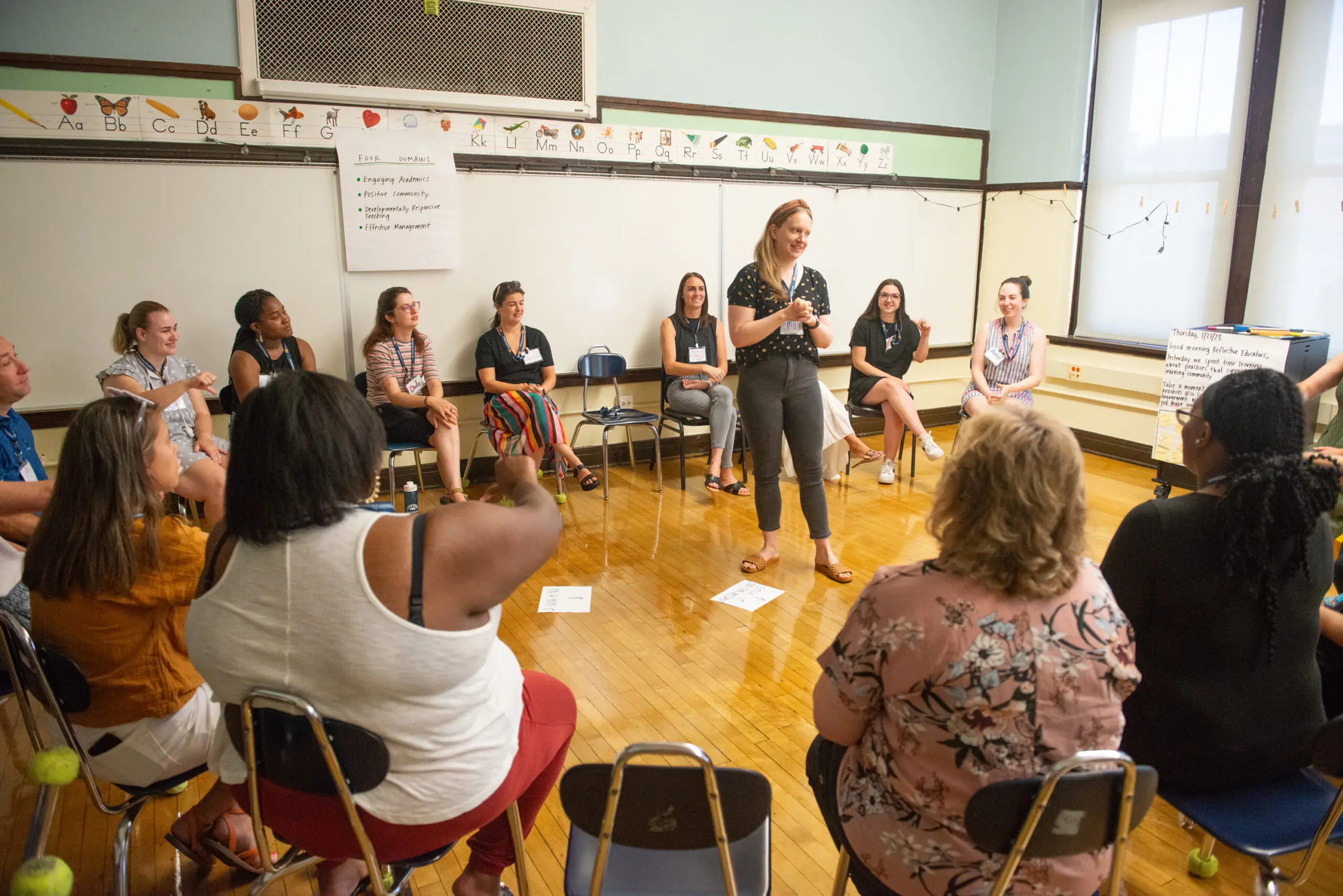In 2022, researchers examining the relationship “between the implementation of social-emotional learning in the classroom and the social behaviors exhibited by students” identified four key ways the Responsive Classroom approach positively impacts students, teachers, and the classroom environment:
Authors: Emily Cline, Lauren Lingle, Molly Ippolito, Kelly Ksiazek, and Adel Al-Bataineh
Publication: The Turkish Online Journal of Educational Technology
Date: October 2022

The Teacher Belief Study measured the change in teachers’ beliefs and attitudes as a result of attending a Responsive Classroom course. The results of the two-year study showed that Responsive Classroom courses significantly changed teacher beliefs and made the biggest impact on teachers’ beliefs about two of the key factors that inform a teacher’s approach to teaching and discipline: the goal of discipline and goodness of student intentions.
Authors: Clara-Christina E. Gerstner, M.Phil.
Date: July 2020

Columbia University’s Teacher Colleges evaluated the economic benefits of social-emotional learning by studying six interventions, including the Responsive Classroom approach. Researchers found that “improving SEL shows measurable benefits that exceed its costs, often by considerable amounts.” Specifically, for every dollar schools spent on the Responsive Classroom approach, there was a return of almost nine dollars per student.
Authors: Clive Belfield, A. Brooks Bowden, Alli Klapp, Henry Levin, Robert Shand and Sabine Zander
Publication: Journal of Benefit-Cost Analysis
Date: December 2015

This study, which examined the impact of the Responsive Classroom approach on the use of standards-based mathematics teaching practices in third grade classrooms, found that Responsive Classroom teachers showed higher use of standards-based mathematics teaching practices than non-Responsive Classroom teachers. These findings support the use of the Responsive Classroom approach for creating classroom social environments that facilitate standards-based mathematical practices.
Authors: Erin R. Ottmar, Sara E. Rimm-Kaufman, Robert Q. Berry, & Ross A. Larsen
Publication: The Elementary School Journal
Date: March 2013

Starting in 2008, researchers at the University of Virginia’s Curry School of Education conducted a three-year randomized controlled study funded by the U.S. Department of Education’s Institute of Education Sciences. The study, which followed 350 teachers and over 2,900 students, found that teachers’ use of Responsive Classroom practices was associated with the following positive outcomes:
Principal researcher: Dr. Sara Rimm-Kaufman, University of Virginia, Curry School of Education, Center for Advanced Study of Teaching and Learning
Location: 24 elementary schools in a large district in a mid-Atlantic state
Dates: 2008-2011

In 2011, the Collaborative for Academic, Social and Emotional Learning (CASEL) conducted a meta-analysis of 213 school-based, social and emotional learning programs involving 270,034 kindergarten through high school students. Compared to controls, SEL participants demonstrated significantly improved social and emotional skills, attitudes, behavior, and academic performance that reflected an 11-percentile-point gain in achievement.
Authors: Joseph Durlak, Roger P. Weissberg, Allison Dymnicki, Rebecca Taylor, and Kriston Schellinger
Publication: Child Development
Date: 2011
Additionally, CASEL has named the Responsive Classroom approach as a CASEL SELect Program, their highest designation.

This three-year, longitudinal, quasi-experimental study compared three schools implementing the Responsive Classroom approach at a schoolwide level with three non-implementing schools and found that the Responsive Classroom approach is associated with better academic and social outcomes for elementary school children. Students showed greater increases in reading and math test scores, had better social skills, and felt more positive about school, while teachers felt more effective and more positive about teaching, offered more high-quality instruction, and collaborated with each other more.
Principal researcher: Dr. Sara Rimm-Kaufman, University of Virginia, Curry School of Education, Center for Advanced Study of Teaching and Learning
Location: Urban school district in the Northeast
Dates: 2001–2004

